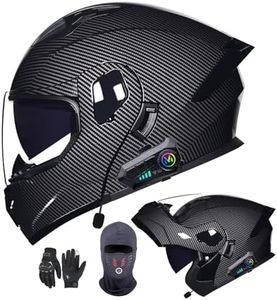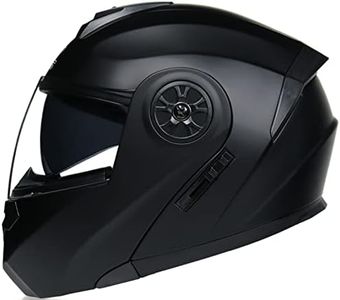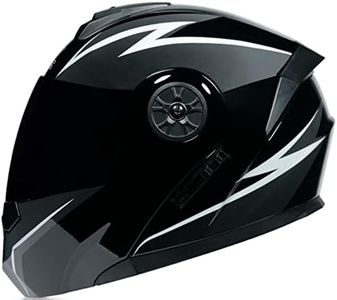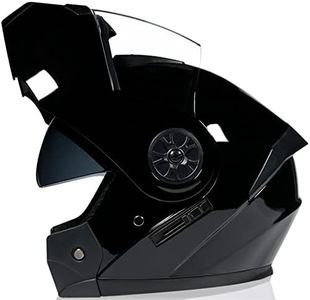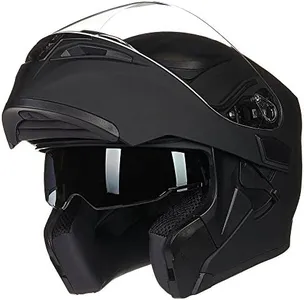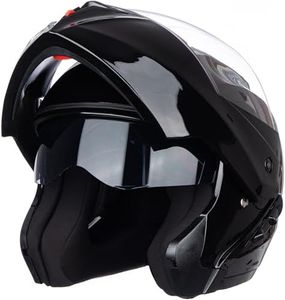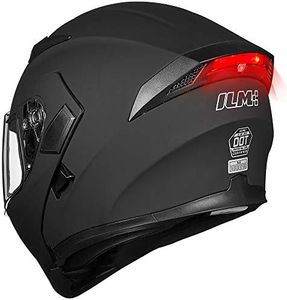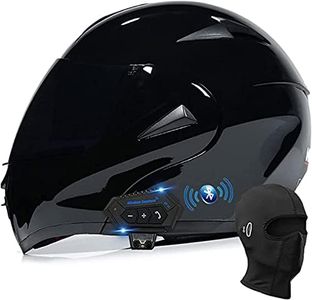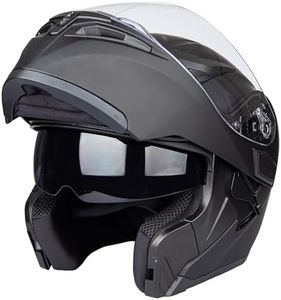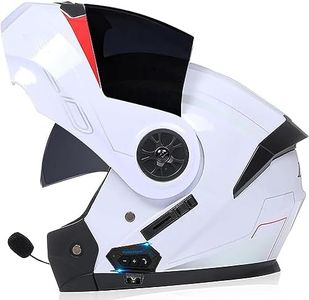We Use CookiesWe use cookies to enhance the security, performance,
functionality and for analytical and promotional activities. By continuing to browse this site you
are agreeing to our privacy policy
10 Best Modular Helmets
From leading brands and best sellers available on the web.Buying Guide for the Best Modular Helmets
Choosing the right modular helmet is a crucial decision for motorcyclists, as it plays a major role in comfort, protection, and convenience. Modular helmets offer a blend of the full-face and open-face helmets by featuring a chin bar that can be flipped up, making them attractive for riders who want flexibility. When shopping for a modular helmet, it's important to focus on the key features that affect safety, comfort, and usability. Understanding these features and how they align with your riding style and habits will help you select the helmet that best suits your needs.Safety CertificationsSafety certifications, such as DOT, ECE, or Snell, indicate that a helmet meets established safety standards for impact protection and retention. This spec is important because a certified helmet has been tested and proven to offer reliable protection during a crash. Certifications like DOT and ECE are commonly recognized globally, while Snell is generally stricter and used for high-performance helmets. When choosing, always ensure the helmet has at least one relevant certification, matching your local safety requirements and intended riding environments.
Shell MaterialThe shell material of a helmet determines its overall strength, weight, and ability to dissipate energy during impacts. Common materials include polycarbonate, fiberglass composite, and carbon fiber. Polycarbonate shells are generally heavier but more affordable, suitable for everyday urban riders. Fiberglass composites provide a balance of weight and strength, fitting for touring or mixed use. Carbon fiber is the lightest and most robust, preferred by those who ride long distances or value a lightweight setup. Base the choice on how much comfort, durability, and weight matter for your typical riding.
VentilationVentilation describes the helmet's ability to circulate air and keep you cool. Good airflow prevents discomfort, especially during long rides or hot weather. Helmets typically feature adjustable vents on the chin, top, and rear. Basic helmets may have limited vents, ideal for short urban trips. Mid-level ventilation caters to mixed or medium-length rides, while advanced systems suit touring or hot climates. Consider how and where you ride: frequent long journeys or summer riding demand efficient ventilation, while shorter, city rides may require less.
WeightHelmet weight affects comfort and fatigue during your ride. Lightweight helmets are less tiring, especially on long journeys, while heavier ones might feel more secure but can cause neck strain over time. Weights typically range from around 1.5kg to 2kg or more. A lighter helmet is great for touring or regular, extended use, while a standard weight is fine for occasional or shorter rides. Think about how long and how often you ride to guide your choice.
Chin Bar MechanismThe chin bar mechanism is what allows modular helmets to convert from full-face to open-face. The smoothness, reliability, and one-hand operation of this feature are essential for ease of use, especially while wearing gloves. Basic helmets may have simple, slower mechanisms best for infrequent switching, while advanced designs can be operated easily while on the go. If you anticipate flipping the helmet open frequently (for talking, quick stops, etc.), look for a robust, easy-to-use chin bar system.
Visor SystemThe visor or face shield protects your eyes from wind, debris, and sunlight. Features to consider include anti-fog coatings, UV protection, quick-release mechanisms, and drop-down sun visors. Simple visors work fine for day rides in mild conditions; more sophisticated options like sun visors and anti-fog coatings are essential for varied weather or long-distance riding. Reflect on your typical riding environments—frequent sun, night rides, or changing weather call for enhanced visor features.
Comfort and PaddingThe interior comfort padding affects fit, sweat absorption, and long-term comfort. Quality padding provides a snug fit and can usually be removed for cleaning. Thicker, plush liners prioritize comfort during extended use, while basic liners may suffice for short commutes. Riders who travel long distances or spend many hours in the helmet should look for high-quality, adjustable removable liners. Occasional or short-trip riders may be comfortable with standard padding.
Noise LevelNoise control refers to how well a helmet minimizes wind and road noise. This is important for hearing protection and comfort, especially at high speeds or on longer journeys. Helmets with better sealing and aerodynamic designs offer quieter rides, ideal for touring or highway use. If you prioritize quietness because you often ride at speed or for hours, seek out helmets known for effective noise reduction. For stop-and-go city or occasional rides, noise may be less critical.

